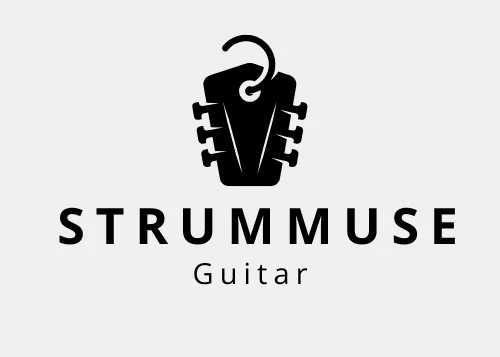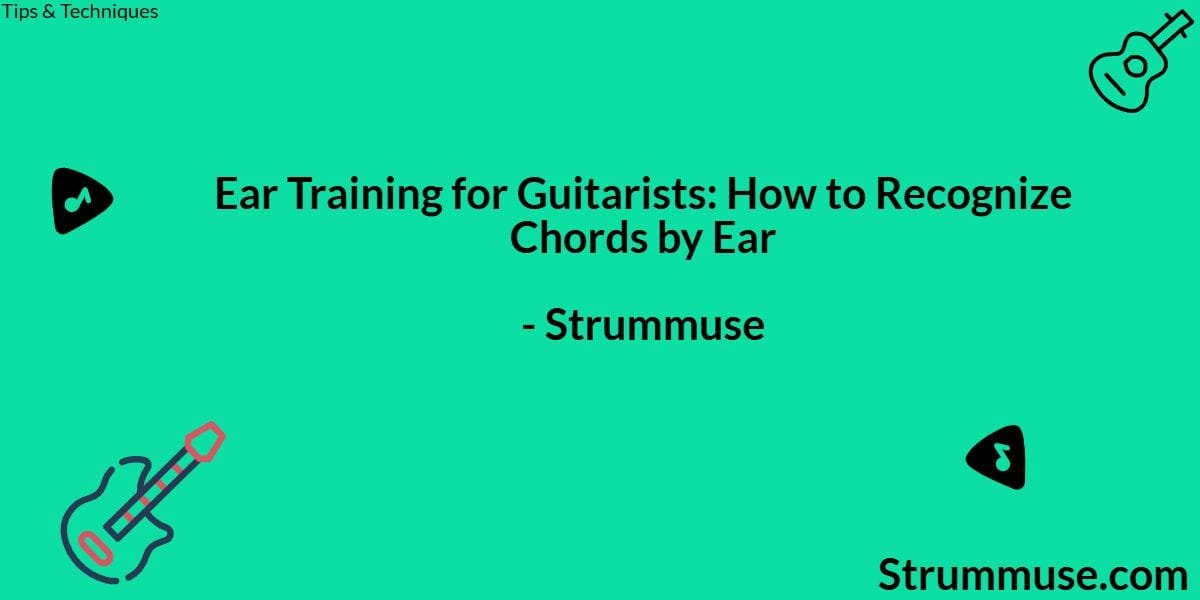Introduction: Why Ear Training Matters
Whether you’re jamming with friends, improvising a solo, or trying to learn a song by ear—ear training is the foundation that connects your ears to your fingers.
Recognizing chords by ear isn’t just for advanced players. With a structured approach, even beginners can develop this powerful skill that improves musicality, speed of learning, and confidence.
In this guide, we’ll cover:
- The basics of chord ear training
- Intervals and how they relate to chords
- Step-by-step exercises
- Tools and apps that help
- Tips to integrate ear training into daily practice
Table of Contents
Benefits of Ear Training for Chord Recognition
- Learn songs faster without tabs
- Improvise and jam more effectively
- Understand music theory more intuitively
- Train your memory and internal sense of pitch
- Build confidence in group and solo settings
Understanding Intervals: The Building Blocks of Chords
Before identifying full chords, it’s essential to train your ear to recognize intervals:
| Interval | Sound Character | Example Song Reference |
|---|---|---|
| Minor 2nd | Tense, dissonant | Jaws theme |
| Major 2nd | Bright | Happy Birthday |
| Minor 3rd | Sad, dark | Greensleeves |
| Major 3rd | Happy, uplifting | When the Saints Go Marching In |
| Perfect 4th | Stable | Here Comes the Bride |
| Perfect 5th | Strong, open | Twinkle Twinkle Little Star |
| Minor 6th | Haunting | The Entertainer |
| Major 6th | Sweet | My Bonnie Lies Over the Ocean |
| Octave | Identical pitch | Somewhere Over the Rainbow |
Step-by-Step Chord Recognition Training
Step 1: Start with Triads (Major, Minor)
Listen to audio clips of:
- C major vs. C minor
- D major vs. D minor
- Practice singing along
- Use a tuner or piano app to check pitch
Step 2: Practice Common Seventh Chords
These add richness and are common in jazz/blues:
- Major 7 (maj7)
- Dominant 7 (7)
- Minor 7 (m7)
Step 3: Recognize Chord Qualities in Progressions
Start with I–IV–V–I in C major (C–F–G–C). Try to identify which chord is which based on its feeling:
- I = home base
- IV = hopeful, brighter
- V = tension, needing resolution
Repeat in multiple keys (G, D, A) to internalize.
Step 4: Try Diatonic Progressions
Play progressions and guess the chords:
- I–vi–IV–V (C–Am–F–G)
- ii–V–I (Dm–G–C)
Try transcribing simple pop songs by ear using this method.
Tools and Apps for Ear Training
- Tenuto (iOS): Interval, chord, and scale quizzes
- Functional Ear Trainer (Android/iOS): Focuses on tonal center training
- Complete Music Reading Trainer: Great for pitch and rhythm
- Musician’s Ear: Tracks your progress with chord types
- Yousician and Fender Play: Interactive learning with chord ear training challenges
Pro Tips to Enhance Chord Ear Training
- Sing what you play – Helps build internal pitch sense
- Record yourself – Play a chord and try to guess it a day later
- Jam with backing tracks – Pause, identify chords
- Use Spotify or YouTube – Pick songs and figure out the chord progression by ear
- Transcribe from memory – Try writing chord charts from songs you just heard
Common Chord Types to Learn by Sound
| Chord Type | Sound Quality | Description |
|---|---|---|
| Major | Bright, stable | Most common root chord |
| Minor | Sad, mellow | Used in emotional contexts |
| Diminished | Tense, unstable | Dramatic or mysterious moments |
| Augmented | Bright, unresolved | Less common, adds tension |
| Sus2/Sus4 | Open, suspended | Often used in folk/pop |
| 7th chords | Jazzy, colorful | Adds depth to progressions |
FAQs About Chord Ear Training
Q: Can I develop ear training without music theory knowledge?
A: Yes. Start with basic triads and focus on listening. Theory helps but isn’t mandatory at the beginning.
Q: How long before I can recognize chords confidently?
A: With daily practice (15–20 minutes), you can hear progress in 4–6 weeks.
Q: Should I use my guitar or piano for training?
A: Both are helpful. Use the instrument you’re most familiar with for faster progress.
Q: Is perfect pitch necessary for chord ear training?
A: Not at all! Relative pitch is far more useful for most guitarists.
Useful Links
- The Ultimate Guide to Learning Guitar Chords, Tabs, and Essentials
- Guitar Finger Practice Techniques for Beginners
- How Many Guitar Chords Are There?
Conclusion: Your Ears Are Your Superpower
The greatest guitarists aren’t just fast or technical—they have amazing ears. They can hear a chord once and know exactly what it is. That skill is built, not born.
Make ear training a part of your daily practice. Start with intervals, move to chords, and challenge yourself with real songs. You’ll soon find that your fingers naturally follow your ears.
Author’s Note
I still remember the first time I recognized a chord progression in a live jam. It felt like unlocking a superpower. No tabs, no guessing—just ears, soul, and the guitar.
If you stick with it, you’ll have that moment too.

